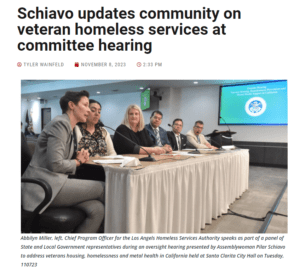Our treatment of troops returning from combat has led to a culture of permanent disability. They deserve better.
By Daniel Gade
Nov. 11, 2021 7:00 am ET

U.S. Army troops being welcomed home from Afghanistan, Fort Stewart, Ga., Dec. 4, 2012.
Photo: Stephen Morton/Associated Press
Your browser does not support the audio tag.
As we pay tribute every November to those who serve and have served, I always think of Dennis Miller of La Salle, Michigan. Dennis gave the ultimate sacrifice during a firefight in Ramadi, Iraq, on November 10, 2004. His parents were notified of his death the next day—on Veterans Day. I was his company commander, bearing ultimate responsibility for his death.
I was wounded but survived with minimal harm. I was less lucky two months later, when a roadside IED detonated and ripped through my lower body. I was evacuated by a Marine Corps helicopter and operated on at a Navy surgical facility. Some 25 sailors and Marines gave their blood to save my life.
After getting flown back to the U.S., I lay unconscious at Walter Reed Hospital for three weeks, then stayed in the intensive care unit for three months. I had more than 40 surgeries during that time, including the amputation of my right leg at the hip.
My path to recovery was long and challenging, but with the support of family and close friends I was able to find my place in the world again. I stayed in the Army and went on to graduate school, eventually earning a master’s degree and Ph.D. in public policy. I taught at West Point for six years and rose to the rank of lieutenant colonel. I recovered and thrived.
Grapevine
A weekly look at our most colorful, thought-provoking and original feature stories on the business of life.
Far too often, however, veterans returning to the civilian world are diverted from paths of self-sufficiency and shuffled down paths of dependency and dysfunction. I witnessed this personally at Walter Reed. Soldiers were transformed from men and women of consequence—bravely fighting for their country—to wards of the state, dependent on others and on charity for their sustenance, purpose and meaning. One soldier whom I knew had been wounded in 2003 and was fully able to function by 2005—yet lingered on at the hospital until at least 2009. His identity had become “patient,” and his goals had been foreclosed.
Later, as I took on various roles in government, I observed these contortions professionally. While working as an adviser to the U.S. Dept. of Veterans Affairs on disability compensation from 2008 to 2013, I was privy to backroom conversations acknowledging that the system was a “one-way ratchet”: Only higher payments and increased disability ratings were to be recommended. Too often missing from the discussion was any idea of helping these veterans rehabilitate themselves, with more training, counseling and employment aimed at overcoming disabilities.

Physical rehabilitation at the Center for the Intrepid at Joint Base San Antonio-Fort Sam Houston, Texas, Oct. 2, 2019.
Photo: U.S. Army photo by Corey Toye
Between 2000 and 2020, the number of veterans receiving disability benefits nearly doubled to 5.5 million; those with the most severe categories of impairment, rated at 70% disability or more, increased nearly sevenfold to 2.2 million. Meanwhile, the overall veteran population fell by about a third to 18.5 million.
Today, a larger proportion of veterans is compensated for disabilities than ever before in the VA’s history. The decadeslong rise, former VA Secretary James Peake explained to me in a 2017 interview, “has been facilitated because that’s what the laws and the rules are.” A recent Iraq war vet told me: “Essentially what happens a lot of the time now” is that the VA “shoves the benefits down the veteran’s throat.”
I retired from the Army after 25 years of service in May 2017. The next day, I realized to my horror that I was waiting for my phone to ring. For my whole life I had been the leader, the problem-solver, the “answer man.” All of a sudden, I realized I wasn’t that man anymore. Nobody needed me. Nobody was going to call.
That psychological transition was the most painful and difficult period of my life. As surprising as it may be for my civilian friends to hear, there is a part of me that misses combat. Every day that I served, I had a sense of utter clarity and purpose. I knew exactly what I was doing, and I knew that there were people counting on me to do it. The civilian world pales in comparison.
As a society, we are now paying more for veterans to be sick than to get better.
Every person who enlists in the military will eventually leave the service, a turning point that is sure to have profound effects on the rest of their lives. Unfortunately, millions of those veterans are being folded into a VA model of permanent disability, which reflects a flawed understanding of human nature and an outdated view of current medical capabilities. Since 2014, the VA’s budget for disability benefits has eclipsed its spending on healthcare. As a society, we are now paying more for veterans to be sick than for veterans to get better.
Though combat injuries comprise just a tiny fraction of all VA-diagnosed disabilities, the number of compensation recipients has continued to soar. Last year alone, nearly 260,000 veterans began receiving disability benefits—about five times the number of American troops wounded in the Afghan and Iraq wars since 2001. The idea that veterans by definition are “disabled” has become a story the country is too eager to accept.
Before new recruits enter military service, they generally have been useful plows in the peacetime world. We break them down in combat training and build them back up through drills and commands, forging them into swords (to complete the metaphor from the Book of Isaiah). But once their service is complete, we don’t put enough effort into converting them back into plows. We leave veterans as swords and frequently discard them. We shower them with superficial celebrations even as we treat them with neglect, and these swords pick up rust.
Fundamental reform of the VA’s disability compensation system is crucial to ensure that veterans can lead lives of meaning, purpose and value. The first priority is to establish employment as the ultimate goal of the transition process, including for veterans with work-limiting conditions. Meaningful employment should be the core objective, with the goal of allowing a veteran to leave behind temporary financial assistance.
We must also reassess the term “disability,” limiting its application to truly disabling conditions and providing more funding for veterans in that circumstance. Money saved by these stricter requirements could be used, in turn, to pay for more job training, more counseling services and even cash incentives for veterans making the transition back to civilian life.
These changes will not be easy to achieve. Powerful interest groups stand in their way, and politicians often lack the will and courage to engage with these thorny issues. But what we are doing now for veterans plainly isn’t working, as the rising rate of veteran suicide rate suggests.
This Veterans Day, I am honoring the memory of Dennis Miller. I am also reflecting on the millions of veterans who have served with honor and bravery. Our goal should be to help them return to civilian life and succeed in their communities, just as they once succeeded in uniform. The country should commit itself to helping them become useful plows again—not mourn the fact that they are no longer swords ready for battle.
—Mr. Gade is the author, with Daniel Huang, of “Wounding Warriors: How Bad Policy Is Making Veterans Sicker and Poorer.”




